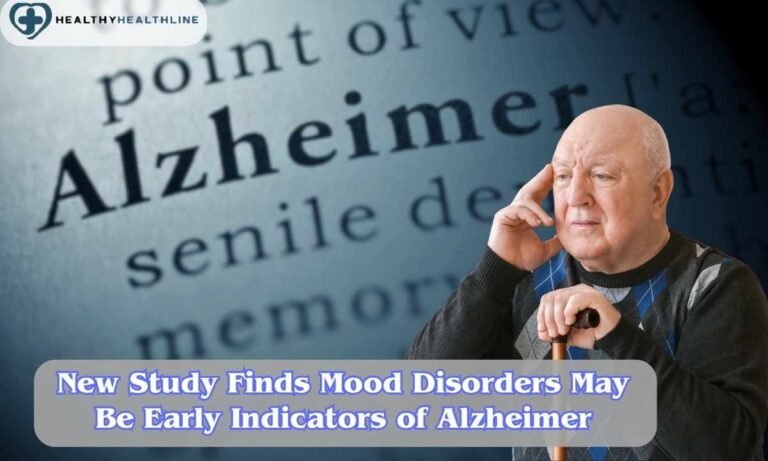Researchers have made a revolutionary find. They have identified links that indicate depression, mood swings, and bipolar disorder are early signs of neurodegenerative conditions such as dementia and Alzheimer, especially after the age of 40.
Recently, a research team from Japan’s National Institutes for Quantum Science and Technology (QST) discovered high levels of tau protein, a signature of Alzheimer disease, in late-life mood disorder (LLMD) patients’ brains.
These psychological issues can be a precursor to neurological illness, their research found, published in Alzheimer’s & Dementia: The Journal of the Alzheimer Association. The biological link between LLMDs and the onset of dementia, however, has been difficult for researchers to comprehend.
Key Findings from the Research
In order to investigate this relationship with advanced positron emission tomography (PET) imaging and postmortem brain scans, Shin Kurose and Keisuke Takahata of the National Institutes for Quantum Science and Technology (QST) in Japan conducted the study. The research involved 47 healthy older adults and 52 late-life mood disorder (LLMD) individuals. The results showed:
- Tau Protein Accumulation: Compared to 15% of healthy controls, approximately 50% of LLMD participants had increased tau pathology, especially in the frontal cortex.
- Amyloid Beta Deposits: Approximately 29% of people with LLMD had amyloid beta buildup, compared to only 2% of controls.
- Temporal Relationship: Researchers discovered that mood disorders typically occur 7.3 years before cognitive and motor decline, indicating that these mental health issues may be early signs of neurodegenerative diseases.
Almost one-third of the LLM patients had amyloid plaques, an important indicator of Alzheimer’s disease. The frontal lobes in some patients also had accumulation. Emotions, personality, and decision-making abilities are all controlled by the frontal lobes. Most importantly, these deposits were found well before cognitive problems emerged. The autopsy information revealed that mood swings were prevalent 7.3 years before memory or motor difficulty.
Other Findings
The study’s multimodal design and strong methodology combine PET imaging and postmortem validation to advance understanding of neurological disease pathways.
This breakthrough helps map the continuum from mood disorders to dementia, according to lead author Dr. Kurose. It could be possible to enhance diagnostic quality and tailor treatment regimens by disclosing pathological features in actual patients. Dr Kurose confirmed that the findings are consistent with evidence that neurodegenerative diseases, such as Alzheimer and non-Alzheimer tau-related pathologies. They also learned that it can first present as psychiatric symptoms. Since most participants with LLMDs in the study had no or mild cognitive impairment.
Moreover, Dr. Takahata pointed out the possibilities of the newly applied PET tracers. This stressing their capacity to detect a spectrum of tau variants. Besides enhancing diagnostic precision, this potential extends our knowledge of disease heterogeneity, a critical factor in devising personalized therapies.
The Link Between Mood Swings and Neurodegenerative Diseases
To identify the exact correlation of mood swings with neurodegenerative disorders. There have been many research studies have been carried out through the years.
As per a 2023 research study by the Canadian Institute of Health Research (F.R.B.), dysfunctions in the serotonin (5-HT). System are linked with depression as well as autonomic dysreflexia (AD). This could be responsible for causing mood and cognitive disturbances.
Hippocampal shrinkage is more related to late-onset depression than to early-onset AD. And according to some structural magnetic resonance imaging (MRI) studies. This also means that some elderly people might develop both depression and hippocampal shrinkage. This may be a result of early AD-related pathophysiology. All of these pieces of evidence support the possibility that some (but not all) patients with late-life depression have hippocampal. And their depressive symptoms are prodromal AD. Therefore, some elderly individuals might develop depression as the first manifestation of AD.
According to a study from 2020, dementia and depression are correlated with high neuroinflammatory processes. For example, microglial activation and pro-inflammatory cytokine production. Vascular lesions influencing mood and cognitive capacity produce cerebrovascular disease, which is frequently comorbid with dementia and late-life depression.
Also, both cognitive reserve and brain reserve account for the relevance of risk and protective factors to cognitive impairment (including the gradual progression into dementia) secondary to brain injury.
Clinical Implications
Clinicians should consider mood symptoms in older individuals as potential markers, especially if they occur without apparent cognitive decline. In order to the development of underlying neurodegenerative disease. By detecting dementia at its initial non-cognitive stage, tau-PET imaging can be an important tool for initiating disease-modifying therapy early on.
Physicians should understand that late-life mood disorders may not be independent mental illnesses but could be a sign of more severe brain illness, which requires a more extensive diagnostic process. The early diagnosis of neurodegenerative pathology may lead to more active treatments like such as disease-modifying drugs, lifestyle modification, or cognitive therapy. Understanding the difference between late-onset and recurrent mood disorders assists in dementia categorization and tailoring surveillance methods.
Limitations in Comprehension of the Advances
Researchers need to conduct additional studies to clarify the exact neurological mechanisms linking late-life mood disorders to dementia, especially in cases of late-life bipolar disorder. Not every aberrant protein sequence or subtle neuropathological change potentially responsible for these disorders is detectable with the level of brain imaging technology presently available. It is difficult to predict who will develop dementia since late-life depression and co-morbid mood disorders are extremely heterogeneous, with a variety of pathophysiologies and clinical courses.
You can also Read about:


